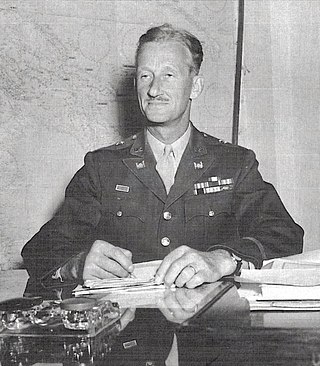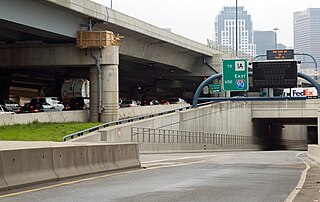
The Mississippi River is the second-longest river and chief river of the second-largest drainage system in North America, second only to the Hudson Bay drainage system. From its traditional source of Lake Itasca in northern Minnesota, it flows generally south for 2,340 miles (3,766 km) to the Mississippi River Delta in the Gulf of Mexico. With its many tributaries, the Mississippi's watershed drains all or parts of 32 U.S. states and two Canadian provinces between the Rocky and Appalachian mountains. The main stem is entirely within the United States; the total drainage basin is 1,151,000 sq mi (2,980,000 km2), of which only about one percent is in Canada. The Mississippi ranks as the thirteenth-largest river by discharge in the world. The river either borders or passes through the states of Minnesota, Wisconsin, Iowa, Illinois, Missouri, Kentucky, Tennessee, Arkansas, Mississippi, and Louisiana.

The Eads Bridge is a combined road and railway bridge over the Mississippi River connecting the cities of St. Louis, Missouri and East St. Louis, Illinois. It is located on the St. Louis riverfront between Laclede's Landing, to the north, and the grounds of the Gateway Arch, to the south. The bridge is named for its designer and builder, James Buchanan Eads. Work on the bridge began in 1867, and it was completed in 1874. The Eads Bridge was the first bridge across the Mississippi south of the Missouri River. Earlier bridges were located north of the Missouri, where the Mississippi is smaller. None of the earlier bridges survives, which means that the Eads Bridge is also the oldest bridge on the river.

URS Corporation was an engineering, design, and construction firm and a U.S. federal government contractor. Headquartered in San Francisco, California, URS was a full-service, global organization with offices located in the Americas, Europe, Africa, and Asia-Pacific.

Carol Molnau is an American politician who served as the 46th lieutenant governor of Minnesota, from 2003 to 2011. She formerly served as head of the Minnesota Department of Transportation (Mn/DOT). She is known for her opposition to state funding of the mass transit systems of the Minneapolis–Saint Paul metropolitan area.

Dr. John Alexander Low Waddell was a Canadian-American civil engineer and prolific bridge designer, with more than a thousand structures to his credit in the United States, Canada, as well as Mexico, Russia, China, Japan, and New Zealand. Waddell’s work set standards for elevated railroad systems and helped develop materials suitable for large span bridges. His most important contribution was the development of the steam-powered high-lift bridge. Waddell was a widely respected writer on bridge design and engineering theory, as well as an advocate for quality in higher education engineering programs. The company he founded in 1887, 'J.A.L. Waddell, Consulting Engineer,' would eventually become the modern day Hardesty & Hanover, a leading moveable bridge engineering firm. Many of Waddell's surviving bridges are now considered historic landmarks.

The Congressman William L. Clay Sr. Bridge, formerly known as the Bernard F. Dickmann Bridge and popularly as the Poplar Street Bridge or PSB, completed in 1967, is a 647-foot-long (197 m) deck girder bridge across the Mississippi River between St. Louis, Missouri, and East St. Louis, Illinois. The bridge arrives on the Missouri shore line just south of the Gateway Arch.

Panama's Centennial Bridge is a major bridge crossing the Panama Canal. It was built to supplement the overcrowded Bridge of the Americas and to replace it as the carrier of the Pan-American Highway. Upon its opening in 2004, it became the second permanent crossing of the canal.

The Sidney Lanier Bridge is a cable-stayed bridge that spans the Brunswick River in Brunswick, Georgia, carrying four lanes of U.S. Route 17. The current bridge was built as a replacement to the original vertical-lift bridge, which was twice struck by ships. It is currently the longest-spanning bridge in Georgia and is 480 feet (150 m) tall. It was named for poet Sidney Lanier. Each year, there is the "Bridge Run" sponsored by Southeast Georgia Health System when the south side of the bridge is closed to traffic and people register to run the bridge.

Leif Johan Sverdrup CBE was a Norwegian-born American civil engineer and general with the U.S. Army Corps of Engineers in the first half of the 20th century. He is best known for his service in the Southwest Pacific Area during World War II where he was Chief Engineer under General of the Army Douglas MacArthur.

WSP , is a multinational engineering and design firm. WSP stands for Williams Sale Partnership. The firm operates in the fields of strategic consulting, planning, engineering, construction management, energy, infrastructure and community planning.

CH2M, earlier CH2M Hill, was an engineering company that provided consulting, design, construction, and operations services for corporations and governments. The company was organized in Corvallis, Oregon, and headquartered at 9191 South Jamaica Street, Englewood, Colorado. In December 2017, the company was acquired by Jacobs Engineering Group.

The Hastings High Bridge was a continuous steel through truss bridge that spanned the Mississippi River in Hastings, Minnesota, United States. It was designed by Sverdrup and Parcel and was built in 1951 by Graus Construction Company of Hasting for $356,000. It was demolished in late 2013 when the current Hastings Bridge opened. It had been scheduled to be torn down and replaced by MNDot in 2019, but after the I-35W bridge collapse in Minneapolis, it was re-prioritized and construction started in 2010.

The I-35W Mississippi River bridge was an eight-lane, steel truss arch bridge that carried Interstate 35W across the Mississippi River one-half mile downstream from the Saint Anthony Falls in Minneapolis, Minnesota, United States. The bridge opened in 1967 and was Minnesota's third busiest, carrying 140,000 vehicles daily. It experienced a catastrophic failure during the evening rush hour on August 1, 2007, killing 13 people and injuring 145. The NTSB cited a design flaw as the likely cause of the collapse, noting that an excessively thin gusset plate ripped along a line of rivets, and that additional weight on the bridge at the time contributed to the catastrophic failure.

HNTB Corporation is an American infrastructure design firm. Founded in 1914 in Kansas City, Missouri, HNTB began with the partnership made by Ernest Emmanuel Howard with the firm Waddell & Harrington, founded in 1907.
Louis Berger is a full-service engineering, architecture, planning, environmental, program and construction management and economic development firm based in Morristown, New Jersey. Founded in 1953 in Harrisburg, Pennsylvania by Dr. Louis Berger, the firm employs nearly 6,000 employees in more than 50 countries worldwide. The company was acquired by WSP Global in 2018.

The Big Dig ceiling collapse occurred on July 10, 2006, when a concrete ceiling panel and debris weighing 26 short tons (24,000 kg) and measuring 20 by 40 feet fell in Boston's Fort Point Channel Tunnel. The panel fell on a car traveling on the two-lane ramp connecting northbound I-93 to eastbound I-90 in South Boston, killing a passenger and injuring the driver. Investigation and repair of the collapse caused a section of the Big Dig project to be closed for almost a full year, causing chronic traffic backups.

The I-35W Saint Anthony Falls Bridge crosses the Mississippi River one-half mile downstream from the Saint Anthony Falls in Minneapolis, Minnesota in the U.S., carrying north–south traffic on Interstate Highway 35W. The ten-lane bridge replaced the I-35W Mississippi River bridge, which collapsed on August 1, 2007. It was planned and is maintained by the Minnesota Department of Transportation (Mn/DOT). The planning, design, and construction processes were completed more quickly than normal because Interstate 35W is a critical artery for commuters and truck freight. The bridge opened September 18, 2008, well ahead of the original goal of December 24.

The Blair Bridge or Abraham Lincoln Memorial Bridge carries U.S. Route 30 between the U.S. states of Nebraska and Iowa, across the Missouri River near Blair, Nebraska. Rail traffic crosses via the parallel Blair Bridge.

Wiss, Janney, Elstner Associates, Inc. (WJE) is an American corporation of architects, engineers, and materials scientists specializing in the investigation, analysis, testing, and design of repairs for historic and contemporary buildings and structures. Founded in 1956, WJE is headquartered in Northbrook, Illinois, and has over 600 professionals in twenty offices across the United States. WJE personnel are specialized in architectural, structural, and civil engineering; materials conservation, chemistry and petrography, and testing and instrumentation.
William Joseph Hedley was an American civil and consulting engineer, chief engineer at Wabash Railroad, president of the American Society of Civil Engineers in 1966, and recipient of the 1973 Hoover Medal.


















